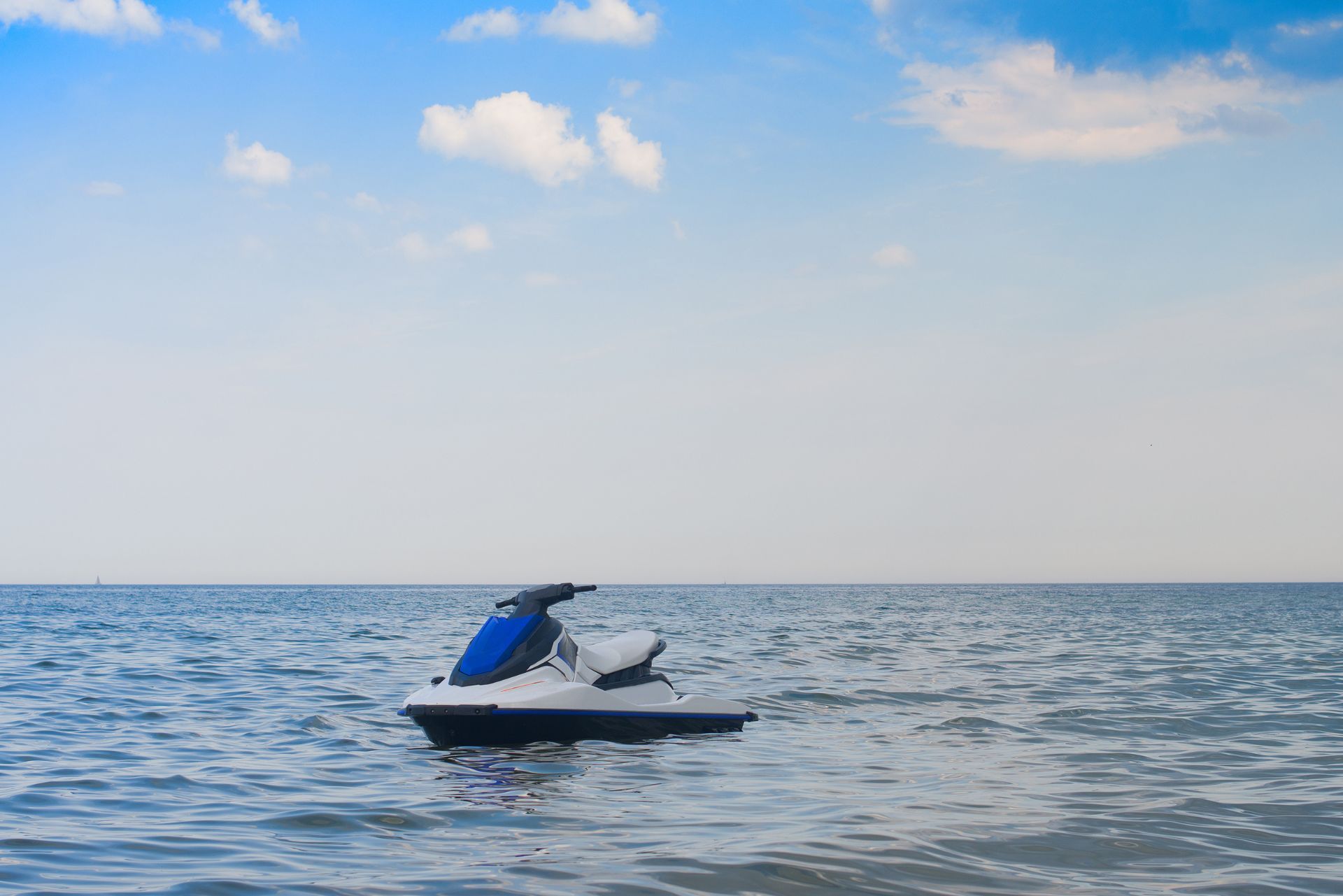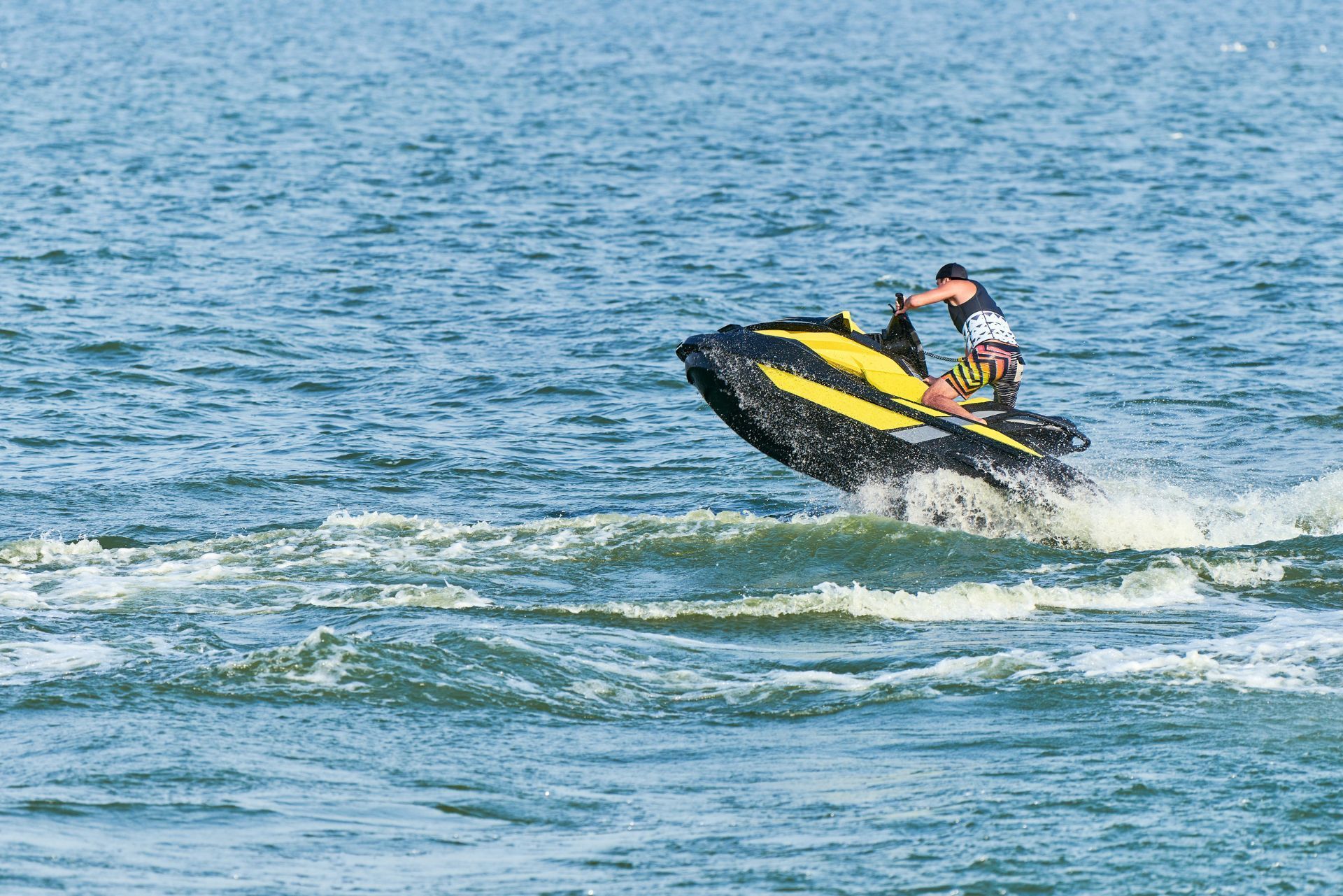Top 3 Recommended Policies

By: David Graves
Licensed Personal Insurance Specialist
425-320-4280
Stretching from the salt-sprayed beaches of the Pacific Ocean to the glacier-fed lakes of the Cascades, Washington is a boater’s playground. Whether cruising across Lake Washington, salmon fishing near the San Juan Islands, or towing wakeboarders on the Columbia River, residents log thousands of water-hours each year. Yet many skippers only discover the complexities of watercraft insurance after an accident, a theft, or a storm rolls through Puget Sound. The guide below breaks down every major element of Washington watercraft insurance—legal requirements, coverage options, premium calculations, claims procedures, and cost-saving strategies—so that every owner can keep both vessel and wallet afloat.
Washington’s Boating Boom by the Numbers
Boating in the Evergreen State is bigger than ever. According to the Washington State Recreation and Conservation Office, more than 250,000 recreational vessels were registered in 2023, a figure that has grown roughly 18 percent over the past decade. Seattle consistently ranks among the top ten U.S. cities for per-capita boat ownership, and retail boat sales in the state now exceed $540 million annually. Public launch ramps on Lake Washington, Lake Union, and Lake Chelan routinely hit capacity by mid-morning on sunny weekends, while marina slips in the Puget Sound region often carry years-long waiting lists. The vibrant maritime culture fuels strong demand for reliable insurance protection.
Higher traffic brings higher risk. The Washington State Parks Boating Program recorded 110 reportable accidents in 2022, with property damage surpassing $5.1 million and 16 fatalities. U.S. Coast Guard data show that operator inattention, excessive speed, and impaired boating remain leading causes of incidents statewide. Climate trends add further volatility: atmospheric rivers and late-season windstorms can batter vessels moored in otherwise sheltered waters. These statistics underscore why insurers closely scrutinize Washington’s distinctive risk profile and why owners should grasp the nuances of coverage before heading out.
As the boating community continues to expand, so does the variety of activities available on the water. From kayaking in the serene waters of the San Juan Islands to sailing competitions in the bustling Seattle waterfront, Washington offers a diverse range of experiences for both seasoned mariners and newcomers alike. The state's natural beauty, characterized by lush forests and stunning coastline, attracts not only recreational boaters but also eco-tourists eager to explore its rich marine life. Events like the Seattle Boat Show and various fishing derbies draw thousands of enthusiasts each year, further solidifying Washington's reputation as a boating paradise.
Moreover, the rise in boating popularity has prompted local governments and organizations to invest in infrastructure improvements. Enhanced facilities at public launch sites, expanded marina services, and increased educational programs on safe boating practices are just a few initiatives aimed at ensuring the safety and enjoyment of all watercraft users. Community outreach efforts, such as free boating safety courses and youth sailing camps, are also gaining traction, aiming to foster a new generation of responsible boaters who appreciate the state's waterways while prioritizing safety and environmental stewardship.

Legal Requirements: What the State Mandates (and What It Doesn’t)
Unlike auto insurance, Washington does not impose a blanket law compelling every recreational boat owner to purchase liability coverage. Instead, the state relies on federal regulations, local marina rules, and lender requirements to drive compliance. If a vessel carries a U.S. Coast Guard–documented mortgage, the lending institution almost always mandates “all risk” hull and liability protection for the life of the loan. The same applies when renting a slip at a Port of Seattle marina, where a minimum of $300,000 in protection and indemnity (P&I) liability is standard.
Mandatory coverage appears in specialized contexts. Commercial charter operators, fishing guides, and sightseeing boats must secure protection that satisfies U.S. Coast Guard regulations and the Washington State Department of Labor & Industries. Personal watercraft (PWC) rented to the public require a certificate of financial responsibility, and any vessel transporting passengers for hire on navigable waters must meet strict liability limits defined in federal statutes. While everyday recreational skippers may legally launch without a policy, many quickly realize that even modest collisions or environmental fines can eclipse the purchase price of a used runabout.
Beyond insurance, Washington enforces several safety prerequisites. Operators born after January 1, 1955 must carry a Boater Education Card when piloting vessels with 15 horsepower or more. All children under the age of 13 must wear U.S. Coast Guard–approved life jackets on open decks. Failing to meet these requirements can complicate insurance claims, as some carriers reserve the right to reduce payouts if legal obligations were ignored at the time of loss.
In addition to these regulations, Washington State emphasizes the importance of boating safety education. Various organizations, including the Washington State Parks and Recreation Commission, offer courses that cover essential topics such as navigation rules, emergency procedures, and the environmental impact of boating. These educational programs not only help boaters understand their legal responsibilities but also promote safe practices that can prevent accidents on the water. Furthermore, many insurance companies provide discounts for those who complete approved boating safety courses, making it a financially savvy choice as well.
Moreover, the state has implemented initiatives aimed at protecting its diverse aquatic ecosystems. For instance, boaters are encouraged to participate in programs that monitor and report invasive species, which can threaten local wildlife and habitats. By adhering to these environmental guidelines, boat owners contribute to the preservation of Washington's natural beauty while also aligning themselves with the legal framework designed to safeguard the state's waterways. This dual focus on safety and environmental stewardship reflects a growing awareness of the responsibilities that come with enjoying the state's abundant marine resources.
Core Coverage Types Explained
Most Washington watercraft policies mirror the structure of automobile packages but inject marine-specific language. Hull coverage—sometimes called “physical damage”—addresses repairs or total loss caused by perils such as grounding, fire, lightning, vandalism, and certain weather events. The insured value can be written on an “actual cash value” basis, which factors depreciation, or on an “agreed value” basis, where the dollar figure remains fixed for the policy term. Agreed value premiums run higher but protect owners from steep depreciation experienced by many fiberglass vessels in the first five years of life.
Liability insurance, often labeled “protection and indemnity,” pays for bodily injury and property damage inflicted on others. Limits range from $100,000 to $1 million, with $300,000 chosen most frequently by Washington boaters. Given the dense boating traffic around Elliott Bay, the tight channels of the Tacoma Narrows, and the high price of waterfront homes along Lake Washington, many insurance agents recommend no less than $500,000. Mariners who ferry guests, even casually, should also carry medical payments coverage to handle immediate care—typically $5,000 to $10,000 per person—without waiting for fault determinations.
Uninsured boater coverage operates similarly to uninsured motorist protection on a car policy. If an at-fault operator lacks insurance or flees the scene, the policyholder’s injuries and lost wages are paid up to the selected limit. This feature is particularly relevant on Washington’s inland lakes, where enforcement resources are limited and small craft owners sometimes skip coverage entirely. Given that more than 60 percent of the state’s registered vessels are 20 feet or shorter, the likelihood of encountering an uninsured operator remains high.
Another essential coverage type is comprehensive coverage, which protects against non-collision-related incidents. This can include theft, vandalism, or damage from natural disasters like floods or hailstorms. For boat owners who leave their vessels docked or moored for extended periods, comprehensive coverage can provide peace of mind, ensuring that they are financially protected against unforeseen events that might occur while they are away. Additionally, some policies may offer coverage for personal effects on board, such as fishing gear, electronics, or safety equipment, which can be a significant financial burden if lost or damaged.
Furthermore, many boaters in Washington may also consider towing and assistance coverage, which can be invaluable for those who venture into the more remote areas of the state's extensive waterways. This coverage typically includes services such as on-water towing, fuel delivery, and even jump-starting a dead battery. Given the unpredictable nature of boating, particularly in areas with changing weather conditions, having this additional layer of protection can save boaters from potentially costly and inconvenient situations. Such coverage not only enhances safety but also ensures that boaters can enjoy their time on the water without the constant worry of what might happen should something go wrong.
Popular Add-Ons and Specialized Endorsements
Standard packages can be augmented with endorsements tailored to Washington’s unique environment. Towing and assistance coverage reimburses for on-water breakdowns, fuel delivery, and soft ungrounding—a valuable safeguard when strong currents near Deception Pass can push even experienced captains into rocky shallows. Salvage and wreck removal endorsements address legal obligations to retrieve sunken vessels, a cost that can easily climb above $25,000 if a crane barge is required. This is especially pertinent in a state where the picturesque coastline is dotted with hidden hazards, making it crucial for boaters to be prepared for the unexpected.
Anglers often add fishing equipment riders that insure tackle, sonar units, and downriggers against theft or accidental loss. Sailboat owners purchase separate mast and rigging clauses that respond to dismasting caused by sudden squalls on the Strait of Juan de Fuca. High-value boats moored year-round may benefit from consequential damage coverage, which pays for gradual loss—such as a failed hose clamp leading to sinking—events traditionally excluded under standard “sudden and accidental” definitions. Additionally, many boaters opt for personal property endorsements to cover gear and personal items stored on board, ensuring that everything from life jackets to coolers is protected against theft or damage, particularly in popular marina areas where foot traffic can lead to opportunistic thefts.
Furthermore, for those who frequently navigate the intricate waterways of the San Juan Islands, specialized navigation endorsements can be invaluable. These endorsements provide coverage for chart plotters and other navigational aids, which are essential for safe passage through the region's complex channels and shifting tides. With the unpredictable weather patterns that can arise, having comprehensive coverage that includes storm damage protection can also offer peace of mind. This is particularly important for boaters who may find themselves caught off guard by sudden changes in weather, as the Pacific Northwest is known for its rapidly shifting conditions, which can turn a pleasant day on the water into a challenging situation in moments.
What Drives the Cost of Washington Watercraft Insurance?
Several variables converge to set a premium. The most obvious is boat type and value: a $25,000 aluminum fishing boat costs far less to insure than a $600,000 Nordic-style trawler. Length, hull construction, maximum speed, and horsepower strongly influence risk assessments. Location also matters; vessels stored in fully enclosed heated facilities in Spokane see lower rates than yachts berthed on Elliott Bay, where theft, storms, and heavy commercial traffic elevate exposure.
Operators’ profiles follow closely. Years of boating experience, completion of approved safety courses, and loss history can swing premiums by 20 percent or more. Insurers reward multi-policy customers—bundling home, auto, and umbrella coverage with watercraft insurance can shave another 10 percent off annual costs. Finally, usage patterns weigh in: a boat launched three months a year on Lake Chelan represents a different risk than one cruising the Salish Sea year-round. Disclosing accurate lay-up periods not only saves money but reduces the chance of claim disputes if a loss occurs during an undeclared active season.
When an incident occurs, swift documentation proves crucial. Most carriers require notice “as soon as practicable,” which in real-world terms means within 24 to 48 hours once safety issues are resolved. Photos, witness statements, GPS logs, and receipts for emergency services all streamline the adjuster’s review. In the event of environmental contamination—such as a fuel spill after grounding—the Washington Department of Ecology must be notified immediately; failure to report can result in fines that insurance may not cover.
Surveyors often enter the picture. For damage exceeding a set threshold (commonly $5,000), insurers dispatch marine surveyors to verify the cause and estimate repair costs. Yard selection is typically the owner’s choice, though insurers may recommend shops with proven quality and rate agreements. Once repairs are approved, direct payment to the facility is common, minimizing out-of-pocket strain. If the vessel is declared a total loss, settlement follows the valuation method specified in the policy—actual cash value or agreed value—minus any deductible.
Strategies to Save Money and Enhance Safety
Proactive steps cut insurance costs while promoting safer voyages. Completing the Washington State Boater Education Course earns discounts at most major carriers and arms operators with knowledge on right-of-way rules, navigation aids, and emergency procedures. Installing Coast Guard–approved fire suppression systems, GPS-enabled security alarms, and automatic bilge pumps reduces both loss frequency and premium by up to 15 percent.
Smart scheduling pays as well. Many insurers allow “lay-up” periods during which comprehensive but not liability coverage stays in force, reflecting the lower risk of a shrink-wrapped vessel stored ashore between October and April. Leveraging this feature can trim hundreds of dollars annually. Finally, periodic marine surveys—though not always mandatory—help document excellent vessel condition, encouraging underwriters to classify the boat in a more favorable tier.

Fast-Track Answers to Common Questions
Does homeowners insurance cover a small boat? A typical homeowners policy may include only $1,000 to $2,500 of coverage for watercraft, and liability usually applies to boats under 25 horsepower. Anything above those limits requires a dedicated watercraft policy, otherwise owners risk sizeable gaps.
Is year-round coverage necessary if the boat is stored for winter? Comprehensive risks—fire, theft, vandalism, and weather damage—persist even in dry storage. A mid-winter warehouse blaze in Anacortes in 2021 destroyed more than 30 vessels and caused over $9 million in losses. Maintaining coverage throughout lay-up season ensures protection against such off-water events.
How high should liability limits be?
The answer depends on assets at stake and the waters you frequent. Coastal cruising near heavy commercial lanes or operating a high-speed performance craft suggest limits ranging from $500,000 to $1 million. In quieter inland lakes, $300,000 may prove adequate, yet rising medical costs make higher limits increasingly prudent.
Conclusion: Charting a Confident Course
From the windswept Pacific coastline to emerald alpine reservoirs, Washington delivers spectacular boating adventures—but also a mosaic of risks that no skipper should ignore. Understanding state regulations, selecting coverage that mirrors personal boating habits, and embracing safety best practices combine to create a sturdy financial life raft. With a properly structured watercraft insurance policy in place, Washington boaters can focus on breathtaking horizons and leave worry astern.

